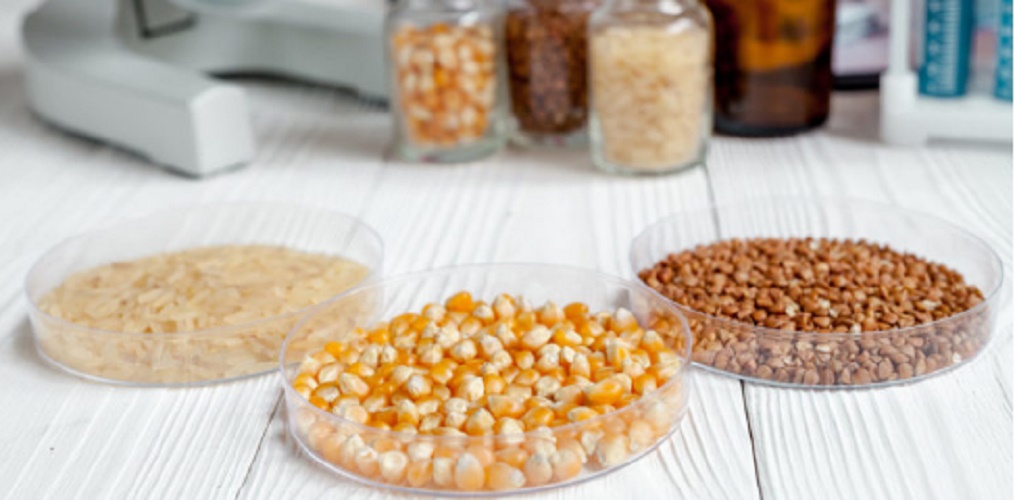What are transgenic organisms?
We explain what transgenic organisms are, how they are classified and how they are obtained. Its advantages, disadvantages and examples.
-
What are transgenic organisms?
Transgenic organisms or genetically modified organisms (GMOs) are known to all living beings whose genetic material has been adulterated by human intervention as a result of genetic engineering. This may involve artificial selection (controlled species crossing ) or gene insertion techniques in the genome of a species (known as transgenesis or cisgenesis).
Genetically modified organisms are usually microorganisms such as bacteria or yeasts , but also animal and plant species, which serve as input for experimental scientific studies, or as a source of so-called transgenic foods , whose consumption may well be a solution to the issue of hunger in the world, or a catastrophe for the planet’s biodiversity .
The production of this type of living beings and their commercialization or worldwide distribution is under control of what is established in the Cartagena Protocol of Biosafety (2000) and, often, constitutes cases of reflection on the part of the scientific and political community concerning ethical and moral positions that this type of genetic manipulations put on the table.
-
Types of transgenic organisms

In principle, we can distinguish three types of transgenic organisms produced today:
- Transgenic microorganisms These are yeasts , fungi and bacteria , generally used in obtaining medical and food substances of great importance. Before such techniques were discovered, for example, the production of insulin for human use was very difficult and expensive; but thanks to genetic manipulation, it can be obtained from bacteria whose genome has been manipulated to insert human protein genes .
- Transgenic animals. The animals transgenic usually intended for laboratory use, whether for understanding the genetic dynamics of life , or to obtain human proteins or genetically modified foods. For example, after studying the growth hormone of the mice and managing to manipulate it to obtain larger specimens, cattle of greater mass and faster growth could be generated , to feed the meat industry more efficiently or generate cows of greater capacity milk generator, for the dairy industry.
- Transgenic plants. The plants transgenic crops are usually food, and the modified fruit has to maximize its production, to withstand environments more extreme or pesticides which were once damaged. Many of these transgenic species are harvested for the biofuel industry .
-
How do you get a transgenic organism?

Cross or hybrid species have been common for a long time, especially in some fruit species (lemon, apple, etc.) and in the case of mules (donkey and horse hybrids). However, hybrids are always sterile , unable to breed new individuals with their genome.
Today there are various techniques to insert or suppress genes in the genome of cells of a species, and make them inheritable. On the one hand, the desired genes can be injected through specialized devices into the cell nucleus , or other living beings can be used with the ability to transfer genes , such as certain types of viruses (lentiviruses) and bacteria (such as Agrobacterium tumefaciens ).
These types of transfers can occur between species that are very distant from each other , or more easily between nearby species, such as two potato varieties.
-
Advantages of transgenic organisms
Transgenic organisms give us the enormous advantage of being able to obtain biological or biochemical tools that would otherwise be difficult to achieve, which is extremely beneficial to the advancement of modern medicine, the pharmaceutical industry and the technology of food .
Animal or plant species that produce more food faster can be the solution to problems of scarcity and hunger in the world, and also represent a great step in understanding the dynamics of genetics and inheritance by biology .
-
Disadvantages of transgenic organisms

Not everything is perfect in the world of transgenics. On the one hand, the effects of transgenics on human health and food are a matter of debate , as some claim that they could be directly linked to the increase in the incidence rate in various ailments and diseases, although there are still no definitive conclusions in The matter.
On the other hand, the risk that modified species pose to natural species could be a huge blow to the planet’s biodiversity. Large corporations that handle GM products such as genetically modified seeds to grow more and better with less water , do whatever it takes to introduce their products into the world market, guaranteeing immediate and profitable results to local producers. Thus, modified seeds end up replacing natural or unmodified variants , which is a competition. unfair that could lead to extinction variants of corn, wheat or sorghum that grow slower and yield less, but have existed for millions of years.
-
Examples of transgenic organisms
Some known examples of transgenic organisms are:
- The first genetically modified food was in 1994 the Flav Savr tomato, which was decomposing at a much slower rate than the ordinary one, allowing its collection closer to maturity (and not before, anticipating the shipping time), which gave them Greater flavor and more nutrients.
- Golden rice is manipulated to generate vitamin A precursors , which makes this grain a nutritionally reinforced food through genetic intervention.
- AquAdvantage salmon is a type of Atlantic salmon fish that has had Pacific salmon and haddock genes inserted to obtain a larger version that grows throughout the year (and not only in summer and spring ).
- GM mosquitoes, resistant to malaria or dengue, were created in 2010 as part of the strategy to eradicate this disease.





